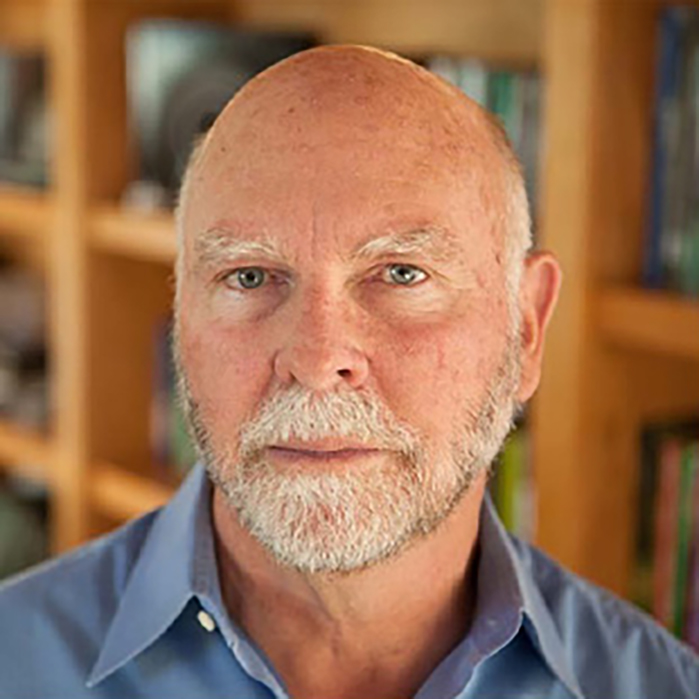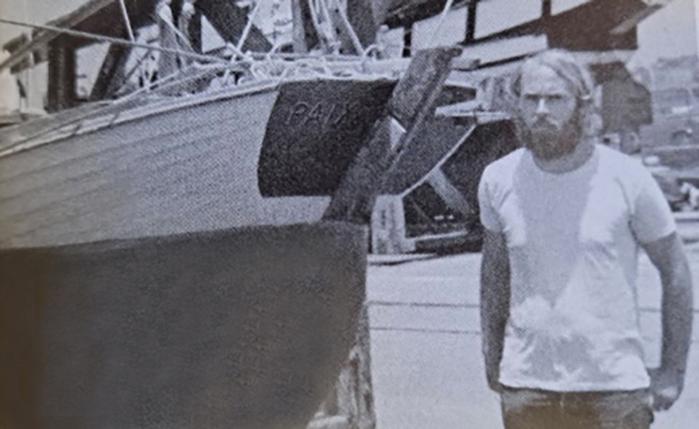J. Craig Venter (CSM Class of 1972)
First to sequence the genome of a free-living organism
Led team that sequenced the human genome
Vietnam War medic and anti-war activist
2009 National Medal of Science honoree
J. Craig Venter is best known for leading the privately funded team that sequenced the human genome, a milestone announced at the White House with President Clinton in 2000 and published in Science early in 2001. Venter’s work gave rise to new fields of study, new jobs, new industries. It helped create the model now entrenched in Silicon Valley of a lone, scrappy entrepreneur overcoming institutional challenges to change the world.
Yet Venter, who graduated from College of San Mateo in 1972, was not tapped early for greatness. He credits CSM for giving him his academic start.
“CSM is where I learned how to learn,” he says. “I learned how to discipline myself. I had teachers who were nothing but supportive. I don’t think I would have gotten that support at a four-year university.”
Growing up in Millbrae, Venter says, his passions were swimming and building things. His C average was just enough to keep him on the Mills High swim team—not enough to get him a college deferment from the Vietnam draft. Entering the war as an Army medical corpsman, Venter was surprised at how much he liked treating casualties and solving medical problems.
“Given the circumstances in the field, I was actually practicing medicine. I loved it. I thrived,” he says. “But to do it in a civilian context, I was looking at 16 more years of schooling. And I was somewhat scared of that, because of how badly I had done before.”
After his discharge, he enrolled at CSM. “Community college was my only option,” he says, to prepare for his ultimate goal of entering medical school.

Photo: J. Craig Venter Institute
Venter with his 19-foot sailboat in San Diego’s Mission Bay harbor, shortly after graduating from CSM in 1972. Photo from A Life Decoded
Venter praises the support he got from CSM English professor Bruce Cameron, who encouraged students to create their own assignments if they didn’t like the set essay. He also praises his chemistry Prof. Kate Murashige. Later, when Murashige became a patent attorney, Venter hired her for his firm.
Venter also got at CSM an early taste of leadership. He organized a massive march from CSM to downtown San Mateo to oppose the U.S. invasion of Cambodia and the subsequent crackdown on protests at Kent State University and elsewhere.
“Most people who served in the Vietnam war opposed it,” he says. “They had a very different view of it than the general public because they had been there.” After the Kent State shootings on May 4, 1970, in which National Guard troops killed four student demonstrators, Venter urged CSM to join the student response erupting on hundreds of campuses nationwide.
The two-mile march from CSM to San Mateo City Hall aimed to urge the City Council to take a stand against the war. (San Mateo Community College District trustees and CSM’s president had already taken that position.) Venter asked those heading to City Hall to dress in business attire to demonstrate their seriousness.
“The idea is to get the silent people to stand up now,” the San Mateo Times quoted Venter as saying. “We’ve seen what violence comes to at Kent State, and we don’t want it.”
Ten thousand people embarked down Hillsdale Boulevard, followed, Venter writes in his 2006 memoir A Life Decoded, by a white van full of FBI agents. District photographer Isago Isao Tanaga, no stranger to activism, captured the historic scene as the marchers turned left at 31st Street.
In 1972, Venter transferred to the University of California, San Diego, where he earned his BS and, pivoting from clinical practice to research, a PhD in pharmacology. In 1984, he joined the National Institutes of Health. With longtime colleague Hamilton Smith, his team was the first to sequence and publish the genome of a free-living organism, the bacterium Haemophilus influenzae, in 1995. In 1998, Venter co-founded the company Celera Genomics, where he and his team sequenced the first draft human genome and followed it up with genetic sequences of the mouse and the fruit fly Drosophilia, both standbys of genetic research.
Venter’s breakthroughs are grounded in the faster “shotgun” technique he developed of genetic sequencing. His teams decoded small sections of an organism’s DNA—about 2,000–10,000 base pairs of perhaps billions total—then assembled them into a full-length genomic sequence. In older sequencing techniques, scientists organize an organism’s chromosomes into a physical map of its genome before sequencing begins. Celera began its work on the human genome while a government-funded team, the Human Genome Project, pursued the same goal with the slower, more conventional approach. The politics and drama of the project are told in Venter’s book. Results were announced jointly at the White House and by video link with then-British Prime Minister Tony Blair.
His nonprofit J. Craig Venter Institute (JCVI), founded in 1992 as The Institute for Genomic Research, went on to other projects including creating a synthetic life form. Synthesizing the genomes of bacteria Mycoplasma genitalium and M.mycoides, they proved the latter’s viability by successfully transplanting it into another Mycoplasma species. Venter hoped to shed light on the development of life by determining how few genes an organism needs to function, but more crucially hoped to protect Earth by developing renewable sources of biofuel.
JCVI continues important work in a variety of genomic research areas related to human genomics and infectious disease research including COVID. It is located on the UC San Diego campus.

